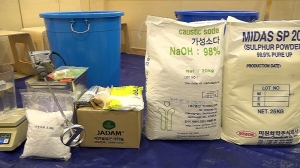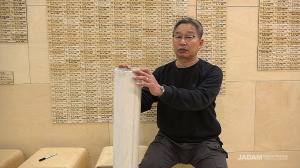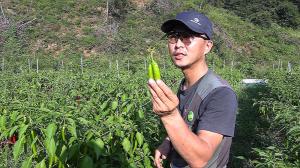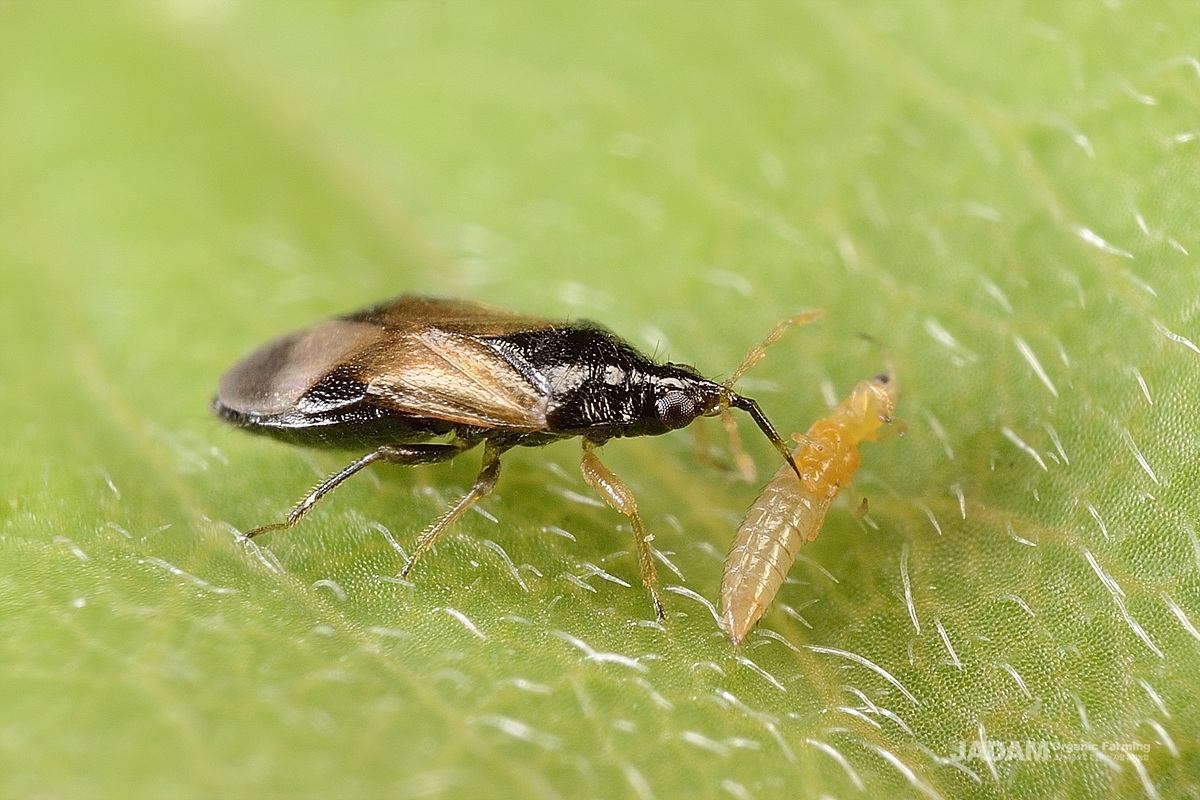 |
| © 2018 JADAM All Rights Reserved Insidious flower bug is eating a Western flower thrip.s |
Hemiptera Anthocoridae
О Scientific name: Orius laevigatus (Fiber)
О English name: insidious flower bug
О Size: The body length of female one is 2.1 mm, and a male one is 1.7mm.
О Host: thrips, aphids, mites and more.
О Distribution: Korea(an introduced insect predator), Japan, China, Taiwan, Europe, and North America (All over the world).
 |
| © 2018 JADAM All Rights Reserved Insidious flower bug nymph |
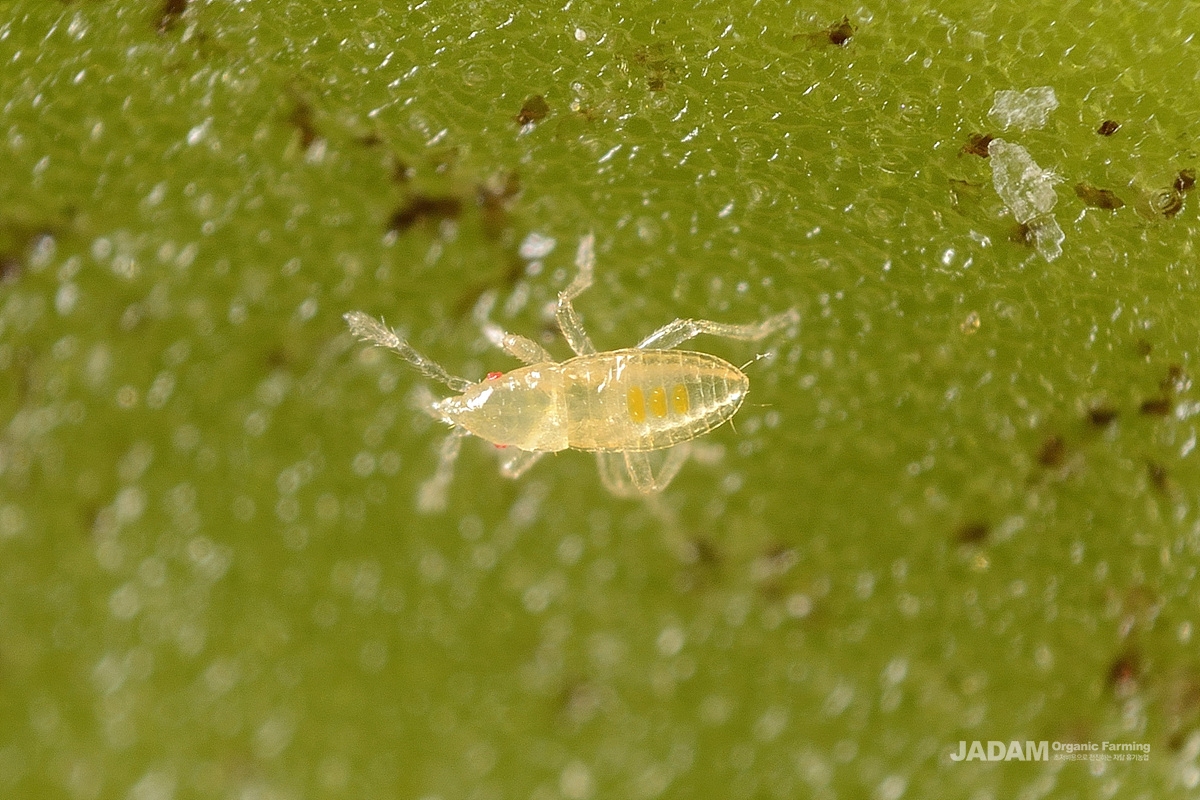 |
| © 2018 JADAM All Rights Reserved The first-instar insidious flower bug nymph. |
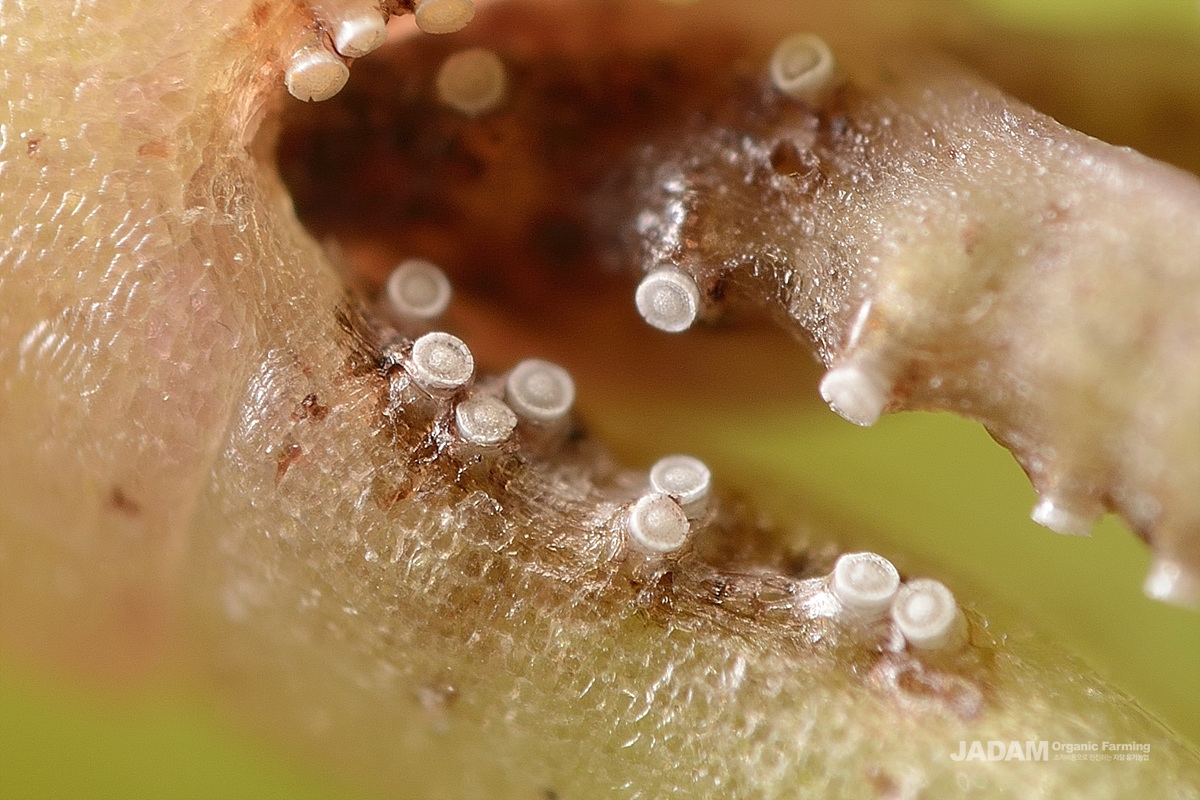 |
| © 2018 JADAM All Rights Reserved Eggs of Insidious flower bugs (spawn) |
This species undergoes "egg → nymph (the 1st instar ~ 5th instar) → adult". It is an incomplete mutation with no pupal period. Although it was difficult to use the predatory bug, "Orius Strigolis" which is a Korean native species, in winter because it has diapause in the short winter, it became possible with insidious flower bugs which don't have diapause in winter. Insidious flower bug's period of development is 4.1 days for eggs and 11. 4 days for nymphs, at 25°C. The adult insect spawns around 224 ~ 225 eggs and it lives for 32 ~ 36 days. An insidious flower bug eats 10.9 the second instar of Western flower thrips a day. After the insidious flower bugs spawn, they stay the coldest season as adults. The insects spend the winter in crevices of old tree' bark or under fallen leaves during the late October. From early April, it moves to clover and weeds and lives by eating aphids, thrips and more. It moves to eat other pests from May.
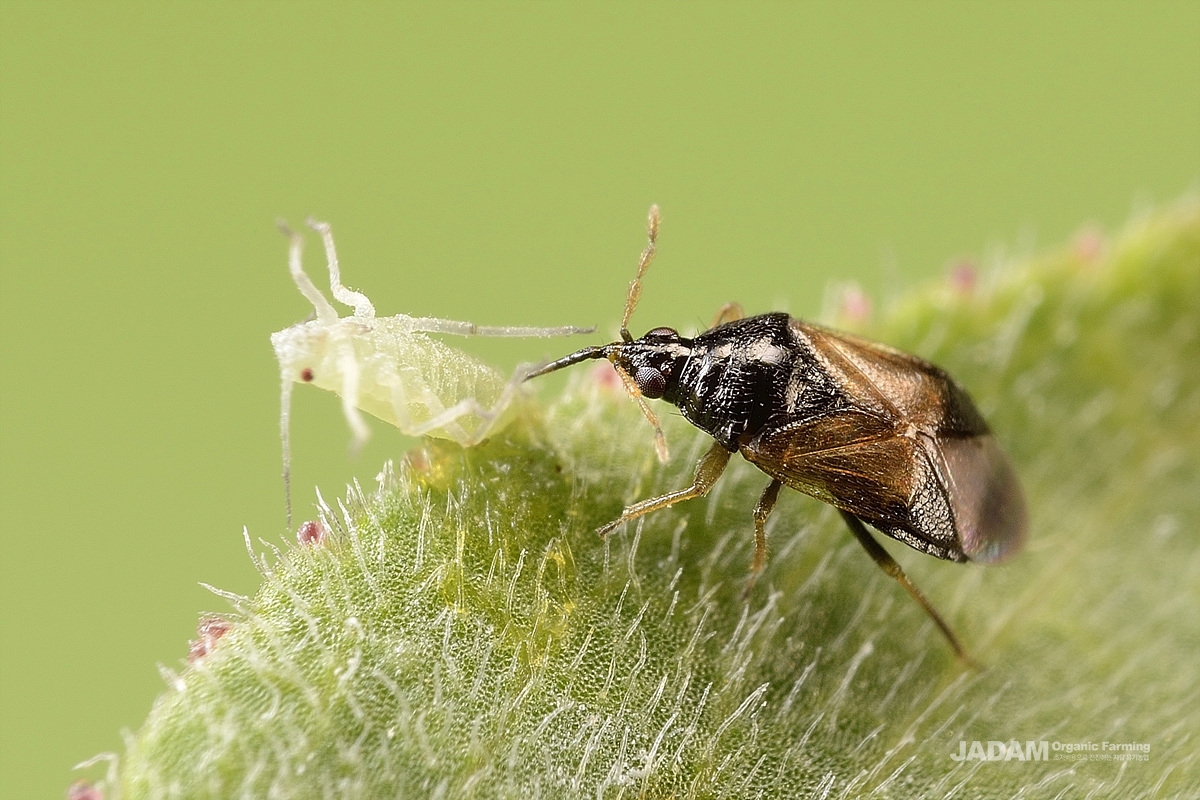 |
| © 2018 JADAM All Rights Reserved Insidious flower bug is eating a mealy plum aphid. |
Translated by Sunyoung Cho
Other articles by Deogkee ParkInterviewed on : 2018.12.31 13:46
<© 2018 Jadam All Rights Reserved>
#Hemiptera#Anthocoridae#Orius#predatory bug#introduced predatory bug#useful bug#biological control


